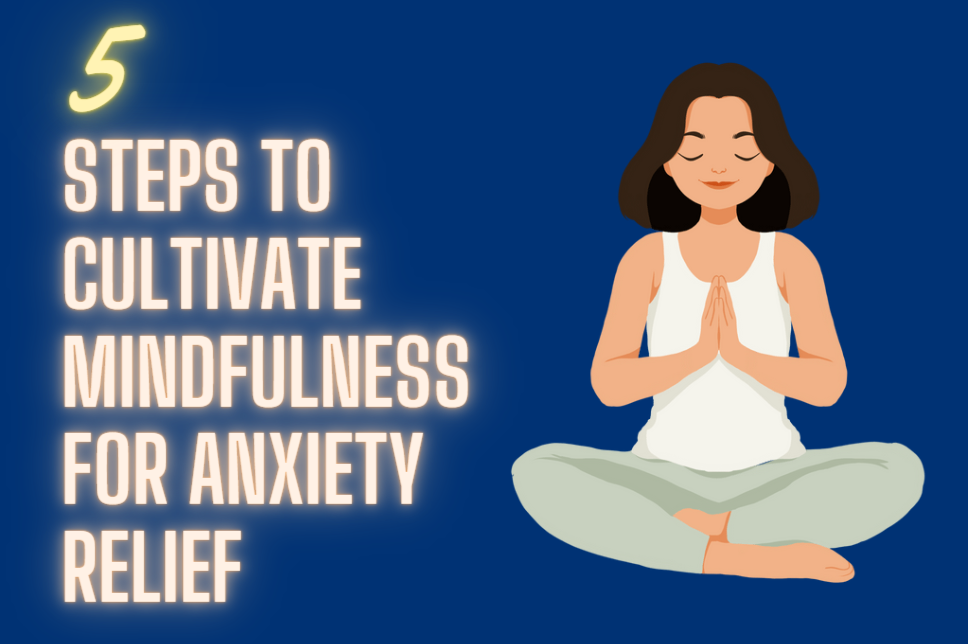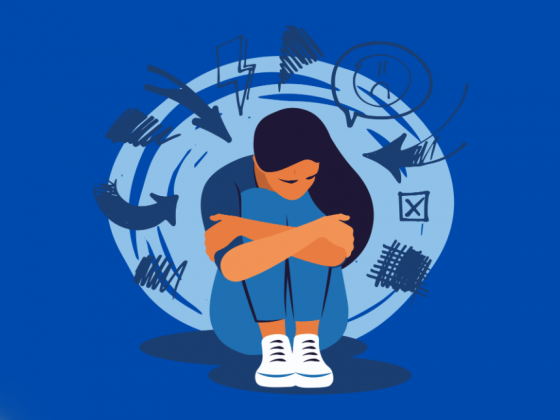Introduction
You’re often told to calm down, but no one shows you how. It’s time to take control of your anxiety with mindfulness.
By diving into these five simple steps, you’ll learn the essentials and weave them into your daily life. From mastering the basics to breathing techniques and body scans, you’ll discover practical ways to quiet your mind.
Embrace the journey and watch as calmness becomes your new normal. Let’s get started.
Understanding Mindfulness Basics
Before diving into the practices that alleviate anxiety, it’s essential you grasp the fundamentals of mindfulness, which involves maintaining a moment-by-moment awareness of our thoughts, feelings, bodily sensations, and surrounding environment. This means you’re fully present, aware of where you’re and what you’re doing, and not overly reactive or overwhelmed by what’s going on around you.
Mindfulness isn’t about blanking your mind or escaping reality. Instead, it’s the practice of observing your experiences without judgment. When you’re mindful, you observe your thoughts and feelings from a distance, without labeling them as good or bad. It’s about recognizing that negative thoughts or anxiety-provoking stimuli are simply passing clouds in the sky of your mind, not necessarily truths or demands for immediate attention.
Establishing a Daily Practice
To integrate mindfulness into your life for anxiety relief, you’ll need to establish a consistent daily practice. This doesn’t mean you have to carve out hours each day; even a few minutes can make a significant difference. The key is regularity, so aim for a routine that’s manageable.
Start by choosing a specific time each day, perhaps in the morning before your day ramps up or in the evening as a way to wind down. This creates a habit, making it more likely you’ll stick with it. Find a quiet space where you won’t be interrupted, and set a timer for the amount of time you’ve committed to.
During your mindfulness practice, focus on your breathing, the sensations in your body, or the sounds around you. If your mind wanders—and it will, that’s normal—gently guide your attention back without judgment.
Remember, it’s about progress, not perfection. You might miss a day or struggle to stay focused, but that’s okay. What’s important is that you return to your practice regularly.
Over time, this commitment to your mental well-being will help soothe your anxiety and provide a foundation of calm in your daily life.
Embracing Mindful Breathing
Once you’ve set up a regular mindfulness routine, incorporating mindful breathing can significantly amplify your anxiety relief efforts. It’s a simple yet powerful technique that centers your attention and calms your mind. Here’s how you can get started.
Find a quiet spot and sit comfortably. Close your eyes if it helps you focus. Now, turn your attention to your breath. Don’t try to change it; just notice it. Feel the air moving in and out of your nostrils, your chest or belly rising and falling.
If your mind starts to wander, that’s okay. It’s all part of the process. Gently guide your focus back to your breathing. With each breath, picture yourself inhaling peace and exhaling stress. Allow the rhythm of your breath to anchor you in the present moment.
You might start with just a minute or two and gradually increase the time as you become more comfortable with the practice. Mindful breathing isn’t a one-off solution; it’s a skill you build over time. But with regular practice, you’ll likely notice a decrease in anxiety and an increase in your overall sense of well-being.
Embrace each breath as an opportunity to ground yourself in the here and now.
Incorporating Body Scans
After mastering mindful breathing, you’ll find body scans to be a natural next step in your journey to alleviate anxiety. This technique involves mentally sweeping through your body to identify and release tension. It’s like a systematic check-in with each part of yourself, which can be incredibly grounding.
You’ll want to start by finding a quiet place where you can lie down or sit comfortably. Close your eyes, and take a few deep breaths to center yourself. Then, begin at the top of your head, gradually moving your attention down through your body. Notice the sensations you feel in each area, but don’t judge or try to change them. If you come across tension, imagine your breath flowing into and loosening that spot.
As you move through your body, you might be surprised at how much tension you’re holding without realizing it. By observing these sensations without attachment, you’re training your mind to be present and less reactive to stress.
Applying Mindfulness in Daily Life
Integrating mindfulness into your daily routine can transform your approach to anxiety and stress. Start by setting aside a few minutes each morning to sit quietly and focus on your breath. This simple act can ground you and provide a calm start to your day.
As you go about your activities, practice being fully present. Whether you’re eating, walking, or even waiting in line, pay attention to the sensations around you and within you. Notice the flavors in your food, the feel of the ground under your feet, or the rhythm of your breathing. When your mind wanders, gently guide it back without judgment.
Mindfulness can also be woven into your interactions with others. Listen actively when someone speaks, giving them your full attention. This not only improves your relationships but also helps you remain centered and calm.
Frequently Asked Questions
How Does Mindfulness Differ From Traditional Meditation Practices in Addressing Anxiety?
Mindfulness focuses on present experiences and accepting feelings without judgment. It contrasts with some traditional meditations that might involve chanting or focusing on a single point.
It allows you to acknowledge your anxiety, understand its roots, and gradually reduce its power over you. By being mindful, you’re not trying to escape anxiety but rather change your relationship with it.
This can lead to potential long-term benefits for your mental health.
Can Practicing Mindfulness Trigger Anxiety or Negative Emotions, and How Should One Handle This if It Happens?
Practicing mindfulness can sometimes stir up anxiety or negative emotions. If this happens, don’t panic. Recognize what you’re feeling without judgment and gently steer your focus back to your breath or senses.
It’s normal and part of the process. You’re learning to sit with discomfort, not to eliminate it. If it becomes overwhelming, take a break and seek guidance from a professional if needed.
Is There Scientific Evidence to Support the Effectiveness of Mindfulness as a Treatment for Anxiety Disorders?
Yes, there’s scientific evidence that mindfulness can help treat anxiety disorders. Studies have shown it reduces symptoms by improving emotional regulation and decreasing stress.
If you’re skeptical, consider trying it out or consulting a healthcare professional. They can guide you through the process and ensure you’re using mindfulness effectively.
How Can Individuals With Severe Anxiety or Panic Disorder Tailor Mindfulness Practices to Avoid Overwhelming Themselves?
If you’re dealing with severe anxiety or panic disorder, start your mindfulness journey gently. Don’t dive into long sessions. Instead, try brief moments of awareness throughout your day. Focus on your breath or surroundings for a few minutes at a time.
If you become overwhelmed, it’s okay to pause and return to the practice later. Remember, it’s about gradual progress, not perfection. Your comfort is key, so adjust the practices to fit your needs.
Are There Any Specific Mindfulness Exercises Recommended for Children or Teenagers Who Suffer From Anxiety?
Certainly, you’ll find mindfulness exercises like deep breathing, guided imagery, or progressive muscle relaxation particularly beneficial for anxious kids and teens.
These practices are tailored to be engaging and age-appropriate, helping them manage their anxiety effectively.
Start with short sessions and gradually increase the duration as they become more comfortable.
It’s all about creating a safe space for them to explore their feelings and develop coping mechanisms.
Conclusion
You’ve explored the essence of mindfulness and learned how to weave it into your daily routine. By establishing a practice, focusing on your breath, and performing body scans, you’re now equipped to tackle anxiety head-on.
Remember, it’s about bringing awareness to the present moment, without judgment. Keep applying these techniques in everyday situations, and you’ll find yourself facing life’s stresses with a calmer, more centered perspective.
Stick with it, and watch your anxiety start to lose its edge.





